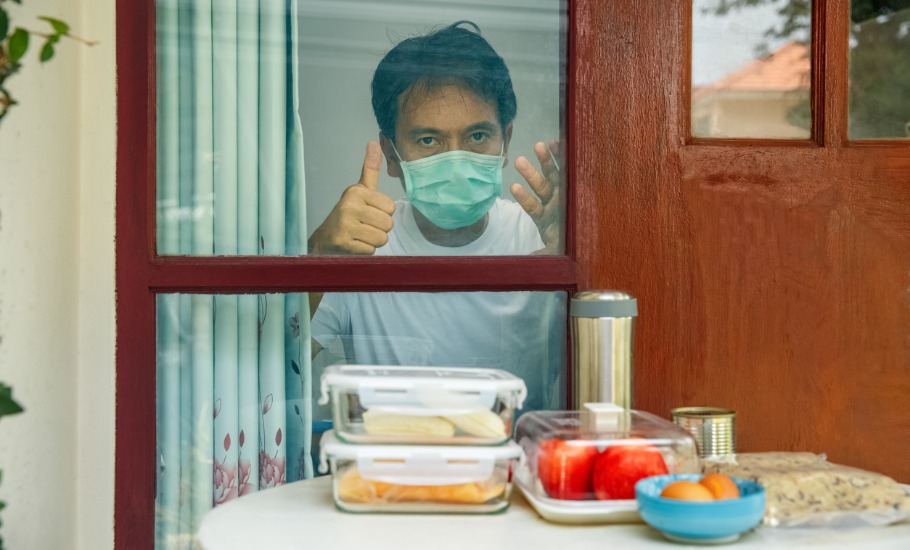
COVID-19: 80% rise in home isolation cases in Delhi

There has been a rise of 80 per cent in the number of home isolation cases of COVID-19 in the national capital in the last 16 days, and parallely the containment zones count too has spiralled up to 976 over the same period, according to official data.
Amid steady rise in fresh and active coronavirus cases in the last several days, the number of people in home isolation here on Saturday reached the five-figure mark again after over a months time.
The number of home isolation cases of COVID-19 on September 5 stood at 10,514. The corresponding figure a day before was 9,822, according to the Delhi health department.
On August 21, the home isolation cases count was 5,818, so from that date, the rise is of 80 per cent in 16 days.
Parallely, the number of containment zones too have multiplied from 589 on August 21 to 976 on September 5, according to official figures.
The Delhi government had been laying a lot of emphasis on home isolation, especially for asymptomatic patients as part of its COVID-19 management strategy in the past several months.
Medical experts have flagged that asymptomatic patients who may not have been tested, and roaming around in the open, could be one of the factors leading to rise in fresh cases in last one week or so.
Delhi recorded 2,973 fresh COVID-19 cases on Saturday, the highest single-day spike in 71 days, as the tally in the city mounted to over 1.88 lakh, even as Chief Minister Arvind Kejriwal asserted that the situation in the city was completely under control.
This was the fifth successive day in September when over 2,000 new cases have been reported in a day. Also, over 38,000 tests were conducted on Saturday.
Twenty-five fatalities were recorded in the last 24 hours, taking the death toll to 4,538, according to the bulletin issued by the Delhi health department on Saturday.
The active cases tally on Saturday rose to 19,870 from 18,842 the previous day.
The national capital had seen a huge surge in cases in June and on June 23, it had reported the highest single-day spike of 3,947, till date.
On June 26, the city had recorded 3,460 fresh cases, the highest single-day spike before September 5.
The home isolation figures on July 1 stood at 16,703 with 437 containment zones marked in the city. On July 31, while the home isolation cases count had come down to 5,763, the containment zones had risen to 692, according to official data.
On August 3, the number of COVID-19 patients under home isolation, and containment zones count, both came down to 5,577 and 496, respectively.
Since, last week of August, the number of home isolation cases and containment zones count, both have been steadily increasing.
On August 25, there were 5,949 home isolation cases and 654 containment zones or localised areas from where infections were reported.
It rose to 6,850 with 763 zones on August 28; and then to 7,876 home isolation cases with 833 containment zones on August 31; and 8,407 home quarantined cases with 894 zones on September 2.
On September 5, the home isolation cases jumped to 9,822 while the containment zones count stood at 946.
Meanwhile, the Delhi government has significantly ramped up testing in the past few days.
The number of tests conducted and corresponding fresh cases reported from August 30-September 5 in that order are: 14,389 tests (1,358 cases); 20,437 (2,024); 24,198 (2,312); 28,835 (2,509); 32,834 (2,737); 36,219 (2,914) and 38,895 tests (2,973 cases).
The positivity rate on Saturday stood at 7.6 per cent while the recovery rate was over 87 per cent, as per the bulletin.
According to the bulletin, 1,63,785 patients have recovered, been discharged or migrated so far.
The first COVID-19 case in Delhi was reported on March 1. In the last week of March, a nationwide lockdown was imposed in view of the COVID-19 situation across the country.
While the economy has slowly been allowed to reopen since June, there has been an increase in cases in Delhi since Unlock 1.0.
Medical experts have conjectured that the rise in number of cases in the national capital in the last few days, could be attributed to patients from outside Delhi coming here to seek treatment, reopening of the economy and many people not wearing masks in public or observing social distancing norms.
(Except for the headline, this story has not been edited by The Federal staff and is published from a syndicated feed.)

